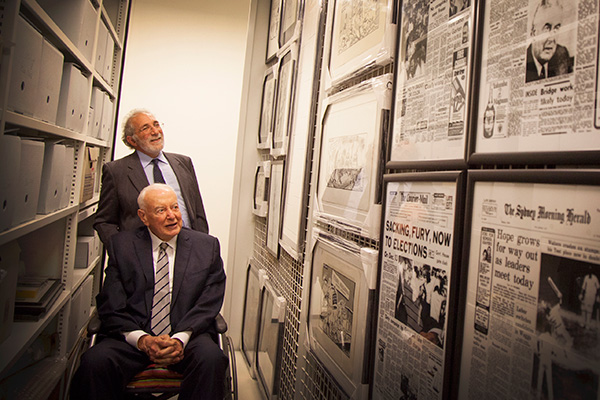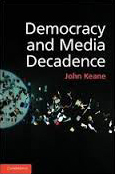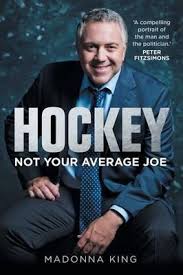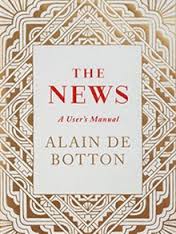Special Issue:
Media, Politics, Policy and the 2013 Australian Federal Election
Editorial
Tribute to The Honourable E G Whitlam AC QC
Politics Can be a Noble Profession
Eric Sidoti
Director of the Whitlam Institute within the University of Western Sydney
News of Gough Whitlam’s death on the morning of Tuesday 21 October 2014 swept across our country, not as some gentle ripple of nostalgia but with all the force of a scorching bushfire. It was befitting the stature and the nature of the man whose approach to politics will be captured forever in his own declaration that ‘you have got to crash through or you’ve got to crash’.
At 98, Gough’s time had come. His achievements though are enduring.
In a rare moment of national unity, the Australian Parliament ceased all business for the day as a mark of respect other than for the condolence addresses delivered in the House of Representatives by the Prime Minister, Leader of the Opposition and a long succession of speakers across party lines. There was an unchallenged consensus that Gough Whitlam had transformed Australia, willing us into the modern world.
In the days since Gough’s death, thousands upon thousands of words have been written and many thousands more have been broadcast. The litany of his Government’s reforms has been recited: universal health care; needs-based school funding; free vocational and university education; no-fault divorce and the family court; the National Gallery and the Australian artistic renaissance; tariff reduction and the first Trade Practices Act; land rights; Commonwealth funded urban and regional development; ending the folly of Australia’s involvement in the Indo-China war; recognition of the People’s Republic of China; an independent foreign policy alongside a commitment to multilateralism which saw a raft of treaties adopted, most notably foundational human rights and the environmental agreements; shedding the last vestiges of the White Australia policy and opening the doors to multicultural Australia as a policy of government.
Worth special mention, though often forgotten, are the Whitlam Government’s electoral reforms: reducing the voting age to 18; senate representation for the Territories and most importantly legislative reform to entrench ‘one vote, one value’.
The Whitlam reforms, though constantly challenged, are embedded in the fabric of our daily lives. They are embedded in the way we see ourselves as Australians. They set a new course for Australia’s place in our region and our relationship with the international community.
Gough’s influence extends even further. As Senator John Faulkner said in his condolence address (27 October) in the Senate:
Gough did not depart politics in 1978 when he departed this parliament. If anything, he was more influential by way of example and encouragement. He was living evidence that being involved could make a difference.
At the same time it is worth remembering that Gough was a tireless and fiercely determined politician. He made mistakes and his government was far from perfect.
He was no fool and held no illusions as to the permanence of reform. As he made clear to us here at the Whitlam Institute, reform is a constant process. Good policy flows from strong research, the best advice and hard work and only then will it have ‘contemporary relevance’ as any good policy must.
The Whitlam Institute was established under an agreement between Gough Whitlam and the then Vice-Chancellor Professor Janice Reid in 2000.
Gough saw the Whitlam Institute as more than the custodian of his Prime Ministerial Library. As important as that is, the last thing he wanted was a mausoleum.
Gough always saw the Whitlam Institute as a source of inspiration and encouragement to those who shared his ambitions for an equal, open, tolerant and independent Australia. His interest in the Whitlam’s Institute’s endeavours, and his willingness to support it in whatever way he could, never waned.
Indeed, on 31 October 2013 the 97 year old Gough Whitlam travelled to the Whitlam Institute on the Parramatta campus of the University of Western Sydney to unveil a plaque marking the opening of his institute’s permanent home in the historic Female Orphan School. It proved to be the last public appearance of one of our country’s greatest public figures.
Gough was in fine form as photos of the day attest. There was much laughter and some emotion. He smiled broadly as he pulled the cord to unveil the bronze plaque that simply read:
The Honourable E G Whitlam AC QC unveiled this plaque upon the opening of the Whitlam Institute and Prime Ministerial Library within this restored Female Orphan School. 31 October 2013
The plaque is now firmly fixed to the exterior wall of the east wing room that houses the permanent exhibition ‘A Changing Australia: the Time of Gough Whitlam’. There it will remain in the decades and the centuries to come taking on the permanence of the 1813 building that is home to the institute that bears Gough’s name.
Politics can be a noble profession but only if those who practice it do so with principle and are driven with a purpose greater than themselves. Gough Whitlam saw politics as public service and devoted his life to that end.
Editorial
The reward for public life is public progress
Paul Keating/ Noel Pearson, Whitlam Memorial
It gives me great pleasure to welcome you to this issue of Global Media Journal/Australia Edition, dedicated to Gough Whitlam who died on October 21 2014. This special issue, co-edited by Myra Gurney, Antonio Castillo, Roumen Dimitrov and Tim Dwyer, is based on reflections on the 2013 election and the complex mediatisation associated with the Coalition’s ascension to power. Just over one year on from that election, the Coalition is in a parlous state, struggling on a number of fronts, in particular, with its seemingly futile efforts to pass its legislative program and controversial budget measures. This current impasse has its roots in the character and unique conditions under which the 2013 election unfolded – and in particular, how the media both influenced the result and itself became a focus as media. It is entirely fitting and timely to now bring the 2013 election into focus and re-consider the media relationships invoked by this historical moment in Australian politics.
As always we are grateful for the work undertaken by the referees of the articles published in this issue. The continuing high standard of the publication depends on this essential part of a journal’s ongoing existence. The mostly volunteer work on the part of the GMJ AU editorial committee members has again made this issue possible. Special thanks as always to our webmaster Roman Goik for his work on preparing the papers for online publication and to Tim Dwyer for his valuable Australia Media Monitor contribution.
I would like to add my special thanks to Eric Sidoti, who as Director of the Whitlam Institute, UWS, had a significant extra load of commitments in light of Gough Whitlam’s passing. Despite this, he immediately responded to my request for a comment that would resonate with our desire to dedicate this issue to Gough Whitlam.
Hart Cohen
Guest Editorial
Myra Gurney
University of Western Sydney
Antonio Castillo
RMIT University
Roumen Dimitrov
University of NSW
Tim Dwyer
University of Sydney
Paul Keating once said that when you change the government of a country, you change the country. And so, on September 7, 2013, Australians voted for a change of government. Since that time, and after six tumultuous years of the Rudd/Gillard/Rudd Labor governments, the political tenor has changed significantly. New Prime Minister Tony Abbott declared that ‘Australia in now open for business’. And – in the year since the election of his government – we have seen considerable winding back of a number of the critical Rudd/Gillard policies.
This special edition of GMJ AU offers papers that explore a range of perspectives related to the role of the media in the political change process and on the political landscape, one that changed significantly since Whitlam rallied us in 1972 with his memorable election ‘call to arms’, ‘It’s Time’. (See the dedication to Gough Whitlam above).
The edition begins with ‘Kick this mob out’: An investigation of the relationship between the Murdoch media and the Australian Labor Government from 2007 to 2013. In this paper, Mitchell Hobbs and David McKnight explore the role of Rupert Murdoch’s varied interests in the election, particularly his controversial, yet unabashed, advocacy of the Liberal-National Party campaign via a series of front page headlines that shaped the tone of the campaign. The issue of media ownership and bias emerged as a topic of widespread discussion. The paper describes the campaigning role of Murdoch’s newspapers in attacking key policies of the first Rudd, and subsequent Gillard, governments. [permission for the re-publication of the front pages for this article has been requested but as yet – not granted by News Ltd].
In contrast to this focus on traditional media, Peter Chen’s New media electioneering in the 2013 Australian federal election,examines the role of new forms of social media in the election campaign. Chen’s paper observes that the two major parties considerably professionalised their management of new media for the 2013 campaign and that it contributed more strongly to the communications mix. The author goes on to argue that while new media would seem to offer opportunities for new players to increase their visibility, this was not the case in 2013. The two major parties, he asserts, continue to dominate the new media environment due to their disproportionate access to electoral resources.
One of the most contentious issues of the Labor government was that of media accountability. Following on from the UK phone hacking scandal, the Finkelstein Inquiry and the Convergence Review placed print media (in particular) under significant scrutiny. Steven Maras uses Bateson’s use of a ‘double bind’, to explore this debate in Media accountability: Double binds and responsibility gaps. In this paper, he examines the intertwined notions of responsibility, accountability and freedom as they relate to this vexed issue. As reactions to the Abbott government’s recent enactment of section 35P of the National Security Legislation Amendment Act (No. 1), calls for a responsible media are usually met with reference to the importance of the media to a healthy democracy and a defence of press freedoms. As Maras reminds us, this section of the new legislation makes it an offence, punishable by up to 10 years imprisonment, to ‘disclose information’ about a so-called special intelligence operation.
With a focus on social media, Michele Zappavigna explores the way in which voters used the microblogging platform Twitter during the election in Enjoy your snags Australia … oh and the voting thing too #ausvotes #auspol: Iconisation and affiliation in electoral microblogging. Zappavigna is interested in the discursive processes by which microbloggers align around shared values materialised as ‘bonding icons’. In particular, her paper focuses on the iconic election day ritual of the polling place sausage sizzle. She concludes that Twitter in particular, facilitates a form of election day camaraderie in the context of communal complaint about the voting experience.
The ‘denouement’ of one of the most politically divisive issues of the last six years – climate change policy and the ‘carbon tax’ – is explored in Missing in action? The ‘non’-climate change debate of the 2013 Australian federal election. In this paper, Myra Gurney analyses both the extent and substance of the debate during the election period. Using the text analytics program Leximancer, she examines the discursive characteristics of the mainstream media coverage of climate change policy, concluding that what little debate occurred was largely framed in relation to the politically contentious ‘carbon tax’, rather than in terms of the environmental imperative. The paper then explores the extent to which the apparent waning of political will by both major parties to substantially engage Australian voters on the need to take carbon abatement seriously, was a genuine reflection of voter apathy. For the author, this was a reaction to an over reliance upon opinion polls or symptomatic of a broader political and media disconnect.
In a fascinating contrast to the 2013 election, Josie Vine examines the media coverage of the ‘forgotten election’ of 1901 for evidence of journalistic ‘eyewitnessing’, a concept that is central to the philosophy and practice of modern political journalism. Vine compares the reporting of the major speeches of the main political protagonists Edmund Barton (who went on to become Australia’s first prime minister), and his opponent George Reid, for the existence of an early form of the so-called ‘zoo plane’, where correspondents en-masse follow the leaders on the campaign trail. The possible existence of journalists relying on an early form public relations media management is canvassed.
The last major contribution to our theme is an essay by Roumen Dimitrov titled ‘Does this guy ever shut up?’ The discourse of the 2013 Australian elections. Using the campaign slogans and media catchphrases, Dimitrov explores the message and image strategies of the major players, with particular attention to the issues of carbon pricing, asylum seekers, economic management and party reform. He concludes that the 2013 elections narrowed the bipartisan language and thinking in which the differences between the rivals, (with the exception perhaps on carbon pricing), were fewer than they wanted the voters to believe. He notes that the language of electioneering moved from long-term policies in the plural, to short-term politics in the singular, and concludes that the increasingly irrational discourse of the election period has not dissolved, but rather hardened following the election of the new Abbott government.
The election also spawned a large number of political tomes, and so our book review section includes perspectives on the Rudd/Gillard years from a variety of authors who are both political actors and media commentators.
Finally, as this edition of GMJ AU was being prepared, Australia lost Gough Whitlam, its 21st prime minister (1972-75), and a man whose brief time in office profoundly changed the country with its wide ranging social reform initiatives, the vestiges of which are woven into the fabric of Australian life today. Many of these are outlined in the tribute to Gough titled ‘Politics can be a noble profession’ written by Eric Sidoti, Director of the Whitlam Institute within the University of Western Sydney (UWS). UWS, the host of this journal, has a special affiliation with Gough Whitlam and we take great pride in being able to contribute to his political legacy, particularly in education and the arts. We thank Eric for his contribution.
Finally, the last word should go to Gough, as presciently remembered by his long time speechwriter and political advisor, Graham Freudenberg at Whitlam’s memorial service on November 5.
As he put it in 1972:
‘Between the habits and fears of the past and the hopes and demands of the future’.Optimism, enthusiasm, confidence – against fear, prejudice, conformity. That is his enduring message to the men and women of Australia. Never more than now.
November 2014
Refereed Articles
-
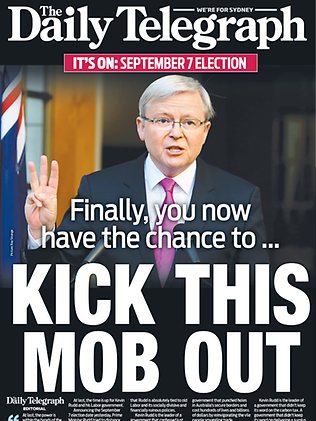
‘Kick this mob out’: The Murdoch media and the Australian Labor Government (2007 to 2013)
Mitchell Hobbs
Read Abstract Read Article
University of Sydney (Australia)
David McKnight
University of NSW (Australia)

New media electioneering in the 2013 Australian federal election
Peter John Chen
Read Abstract Read Article
University of Sydney (Australia)

Media accountability: Double binds and responsibility gaps
Steven Maras
Read Abstract Read Article
University of Sydney (Australia)

Enjoy your snags Australia ... oh and the voting thing too #ausvotes #auspol: Iconisation and affiliation in electoral microblogging
Michele Zappavigna
Read Abstract Read Article
University of NSW (Australia)
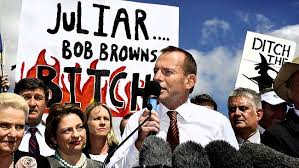
Missing in action? The ‘non’-climate change debate of the 2013 Australian federal election
Myra Gurney
Read Abstract Read Article
University of Western Sydney (Australia)

‘Reporting from the ‘zoo plane’, West Maitland’: An initial exploration into journalistic ‘eyewitnessing’ of Australia’s first federal election
Josie Vine
Read Abstract Read Article
RMIT University (Australia)
Essays
-

‘Does this guy ever shut up?’ The discourse of the 2013 Australian election
Roumen Dimitrov
Read Abstract Read Article
University of NSW (Australia)
Postgraduate Submissions
-

Australia’s Welfare Discourse and News: Presenting Single Mothers
Emily Wolfinger
Read Abstract Read Article
University of Western Sydney (Australia)
Film Reviews
-
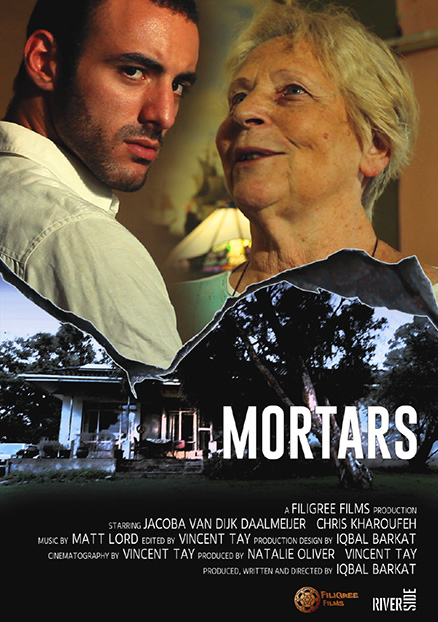
Of war, bricks and ‘Mortars’ (2013): Written and directed by Iqbal Barkat (73 mins)
Asha Chand
Read Abstract Read Article
University of Western Sydney, Australia
Book Reviews
-
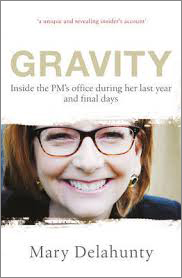
Gravity: Inside the PM's Office During Her Last Year and Final Days
Dianne Dickenson
Read Review
University of Western Sydney (Australia)
Paul Esposito
Tempe High School (Australia)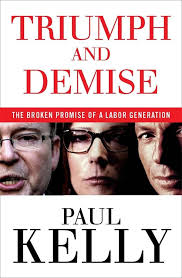
Triumph and Demise: The broken promise of a Labor generation
Bridget Brooklyn
Read Review
University of Western Sydney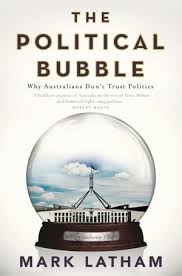
The Political Bubble: Why Australians Don't Trust Politics
Myra Gurney
Read Review
University of Western Sydney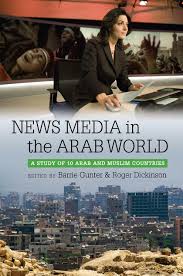
News Media in the Arab World: A Study of 10 Arab and Muslim Countries
Saba Bebawi
Read Review
Swinburne University, Melbourne, Australia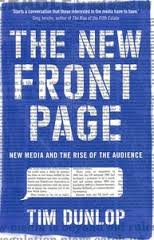
The New Front Page: New Media and The Rise of the Audience
Barbara Alysen
Read Review
University of Western Sydney

